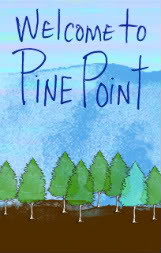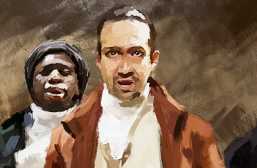The Emergence of New Media Writing

If we consider writing as part of a dynamic ‘ecosystem’, what new possibilities does writing in a digitally networked environment open up?
The concept of writing ecology presents innovative opportunities for audiences to interact with multimodal platforms and create new exhilarating experiences. It is the understanding that writing is an environment where writers, readers and sharers co-exist, collaborate and communicate and adapt to technological advancement and the evolution of human cognition. Multimodal literacy involves communicating meaning through a combination of two or more modes. Modes include written language, spoken language, and patterns of meaning that are visual, audio, gestural, tactile and spatial. The purpose of technological change and advances in communication technology is to impact the potential of writing in a digitally networked environment such as through the interactive web documentary Welcome to Pine Point as a result of the expansion of a dynamic writing ecosystem. The interactive web documentary by Michael Simons and Paul Shoebridge chronicles the story of a mining town called Pine Point and the memories of the people who used to live there. The text is an exemplar of the interactive possibilities for writing that have been enabled by technological change through the use of multimodality, interactivity and remediation.
Welcome to Pine Point indicates the changes in writing style, presentation and articulacy. The level of interactivity in digital texts has shifted alongside technological change but is not a new concept for writing, as flipping through pages in a book is an interaction between the reader and the text itself (Horowitz & Leland, 2015). It is the immersive nature of interaction that sets digital texts and printed texts apart (Page & Thomas, 2011). The interactive web documentary falls into the level 1 category of “Peripheral Interactivity” (Ryan, 2011). It is on this level where the digital text allows the audience to control the pace of the story; choosing when to interact with objects such as playing video clips, looking through photographs, and reading onscreen text. When interacting with the web documentary, the audience becomes unaware of the interface. It is not transparent, but it does require active participation. However, this level of interaction does not affect the outcome of the story as it only permits minimal control over the order of presentation. Despite the lack of control, the reader is still able to connect with the town’s story and its former residents in a unique way, possibly on a deeper level than more traditional modes of communication. The original part of the attraction of digital texts is interactivity because it helps “to counter the passive experience of watching by requiring audiences to make decisions at regular intervals” (Butchart, 2013). This interaction means that the audience has fully immersed themselves in the vital continuation of the digital text. The development of communication technology has enabled peripheral interactivity between the audience and the web documentary and demonstrates the change of the dynamic nature of the writing ecosystem in what it means to read and write.

The emergence of new media writing has brought into being the combination of the multimodal use of new digital technologies. The interactive web documentary involves a unique grasp of language and contexts that transform the spaces of writing but also our sense of space and our place within it. Multimodality plays an essential role in distinguishing between pre-digital and modern texts and provides Welcome to Pine Point with an engaging and nostalgic experience of revisiting and immortalising the past. Ecologies are inherently dynamic; in real time, their structure and content are continually changing, limited only by parameters subject to change over a long period due to technological change. In interacting with this text and its multimodal elements, the audience has a sense of falling into Pine Point itself and creates an experience where the audience can actively participate in the interactive documentary. Through the use of new digital technologies, Welcome to Pine Point provides the opportunity to engage in the text through the possibility of developing an intimate relationship between the reader and Pine Point itself. This effect is heightened through the combined media style to evoke emotion through the use of music, voice-overs, video clips and photographs so that the audience can connect with their senses to see and hear the residents of the town – and provides a sense of social reality. The domain of ideas activated and supplemented in the digital text creates an interpersonal interaction despite not providing direct links to other sources. Digital works “recall the corporeal energies that drive inscription” (Noland, 2009) and calls forth the possibility of associating memories with behaviours suppressed or sublimated by typographic cultures of text. The use of multimodality and new media writing creates a visual and aurally engaging experience for readers to interact within a digital environment with all their senses, something not achievable through more traditional means of writing.
The creation of digital texts similar to Welcome to Pine Point relies on previous forms of communication technology to develop innovative ways of writing. The process of remediation “ensures that the older medium cannot be entirely effaced: the new medium remains dependent on the older one in acknowledged or unacknowledged ways” (Bolter & Grusin, 1999, p.47). It is the expansion of writing ecologies and pre-digital modes of communication that the web documentary “could have been a book, could have been a movie, could have been a website” (MacKie, 2011). The storytelling project draws its inspiration from these media forms to create an interactive platform in a digital environment. It is through the combined use of interactivity and multimodality in which the process of remediation of media ensured the effective communication of the text. The project became a book, photo album, and a film all at once and even echoed the design imitating scrapbook form. These forms of media expand on writing as part of a dynamic ecosystem, one influenced and shaped by technological change, offering new possibilities of interaction in a digitally networked environment.
Ultimately, Welcome to Pine Point provides a sense of social reality to exchange ideas through a new textual form that will affect other communications as time alters with the expansion of writing ecology. Although little more than eight years old, the interactive web documentary continues to offer an exciting experience for internet users to engage with story and multimedia as a result of the advances in communication technology. The multi-platform storytelling project in the form of a ‘liquid book’ is an incredible narrative work that incorporates text, music, videos, and images into an interactive, utterly engrossing digital story. While some might desire a non-linear narrative with more open interactivity for the audience, Welcome to Pine Point’s strength mostly lies in its narrative form, and visual presentation as the documentary examines objects, time, and place. New possibilities for interactivity and multimodality have presented themselves through the process of remediation to create this exemplary digital text to capture the attention of the audience through a vital and innovative form of storytelling.
What do you think? Leave a comment.











Memory and nostalgia being the theme of the experience, you can’t go wrong.
Powerful narrative form and visual presentation. Any other new media like this documentary?
Yes! Snow Fall: The Avalanche at Tunnel Creek 🙂
The embrace of nostalgia is huge in this one.
My memories of testing this was that it was pretty intimate.
I like how much of the content is of poor quality, but adds to the overall feel of the experience.
This is incredibly true. It’s crazy how quickly and constantly the world of writing is always changing.
Oh I remember this documentary. Wish I could try it now but the site did not work for me!
There’s a youtube version of it you can watch if you like!
They let you explore the now-vanished Canadian town in a really creative way.
Lovely article.
The whole experience of Welcome to Pine Point felt in some sense overwhelming, which is certainly not a bad thing.
Definitely a major breakthrough in online storytelling.
It will be interesting to see where this kind of storytelling goes in the future!
The doc is quite extraordinary to look at.
I feel like a wanted to move in different directions within the town and the overall story.
I enjoyed the haunting aspects which highlighted the manufactured and fleeting nature of mining towns.
Dear Authortoria,
I should admit that I have researched and written extensively on multimodal writing-in fact I wrote my dissertation on evaluating multimodal compositions back in 2007. I should also admit that I never watched Welcome to Pine Point-and when I tried to now, my Mac wouldn’t load the Flash to allow me to! If I remember correctly Flash isn’t being used anymore. This brings me to my questions for you-will multimodal writing ecology as you’ve described it be easily phased out and lost to distant places on the internet like old shoes whenever the newest technology comes along? I know that print manuscripts have survived for thousands of years but I worry that the newest flashiest forms will be endangered “ecologies?”
From the comments above especially from Mull, I wondered if there really is the authorial freedom to make anything new from within the frameworks of a multimodal form at this point given technologies limitations-say for example if someone wanted to introduce a character who “saved” the town? I
I have noticed in my teaching career in writing that there are very few apps that truly allow for creating story but most are dedicated to consuming story. What do you think about the balance between creating/consuming in new media writing?
Thanks for writing about an important subject-I’m especially interested in how new AI apps might influence our writing-do you think a robot story would be a social ecology?
Cheers,
Tom Ferstle
Great comment!
There are not many interactive elements and I was kind of sad about that.
Here is to more creators creating art using new media.
It offered a great examination of objects, time, and place.
I’m intrigued and will look at their other work right now. Thank you!
Good job on covering this subject.
An interesting essay, I knew nothing about Welcome to Pine Point. It seems this article will need at least a follow-up article that addresses the impact or broader application of Pine Point since this article is more of an introductory explanation, since as pointed out, this is relatively new.
I love to write different stuffs and it really helped me.
I didn’t know about this documentary, that’s really neat! I can’t remember the name of it but I came across a short story once that was just an entire website, and it was an interactive scroll with simple text and moving background. It’s interesting seeing story telling shaped by new media possibilities!
Interesting stuff!! I think this a quite dynamic method to enjoy reading again. In this time it seems that our minds get bored reading the sea of grey and adding different forms of media to enable a better experience for the reader is phenomenal!
Word is a king! Especially today, when so many people are online. Especially today when people online read only titles (mostly) so every word should be considered.
This is an articulately written article that explains a complicated concept in plain language so all can understand. Interesting concept.
This article was very well written and articulates this concept of an ecosystem.
This article was very well written. Absolutely superb!
Have never heard of Welcome to Pine Point until now, but will definitely look into it now.
I whole-heartedly agree. It’s interesting to look back and watch the evolution of storytelling!
The college I attend requires multimodal “artifacts” instead of the traditional essay. Mostly, I never felt like I was able to totally finish a thought. The constant manipulation of media made me feel scattered. But mandatory freshman English classes are never great.
What college did you attend? Were these requirements imposed by the program/college or by a specific professor?
This is super interesting. I hadn’t heard of this till reading this article. I am definitely going to be doing further research into this.